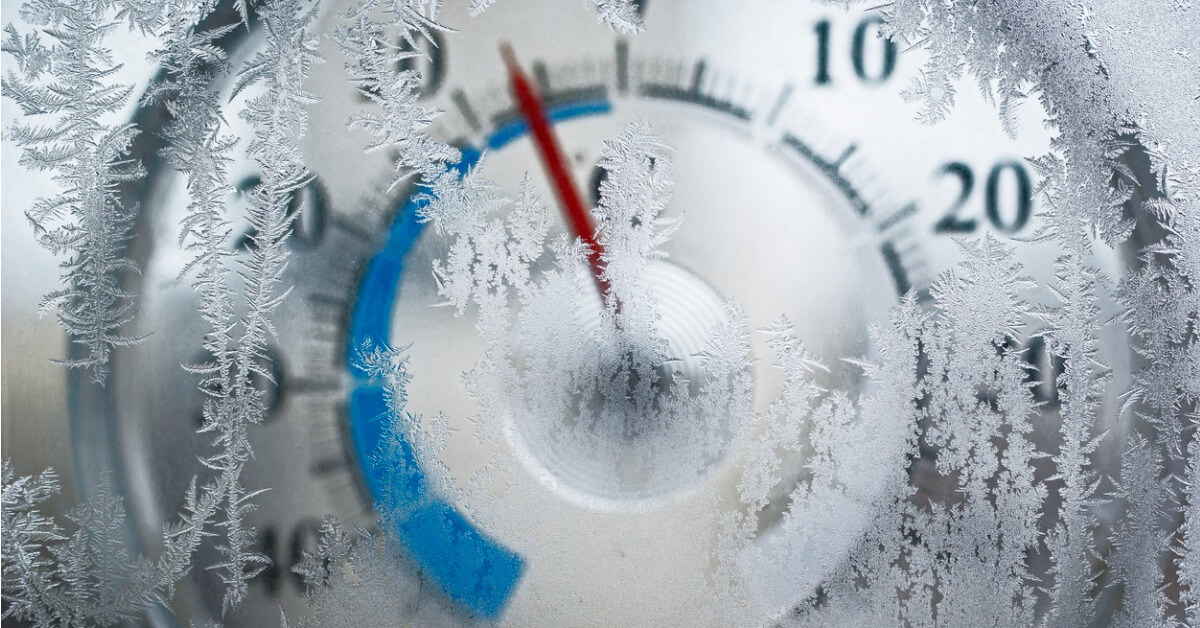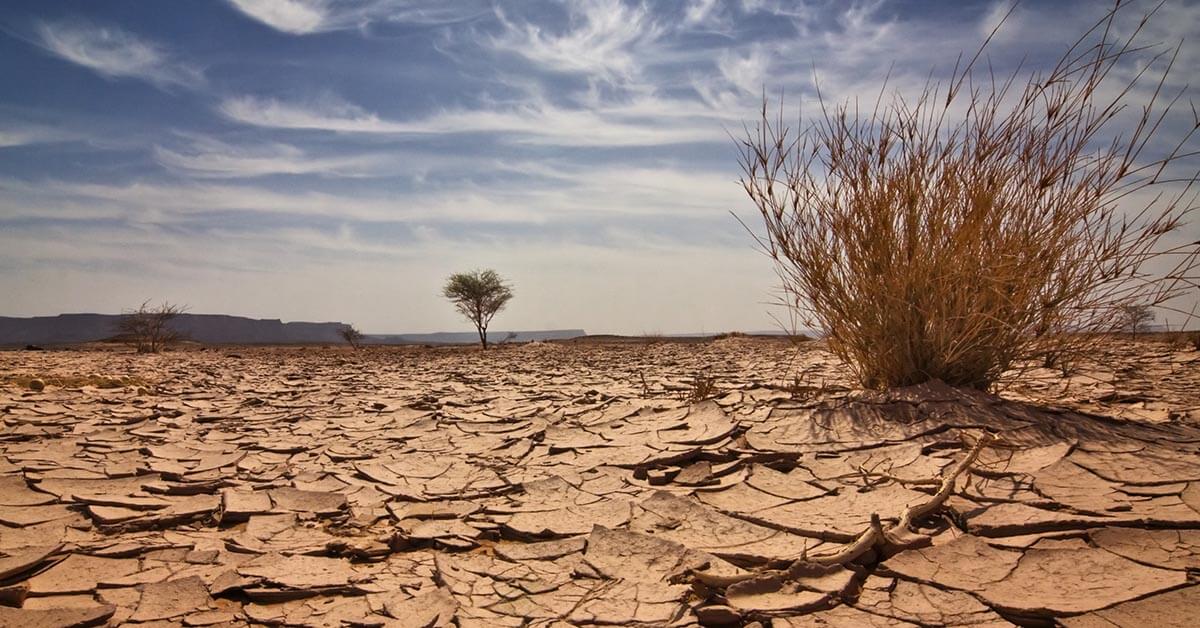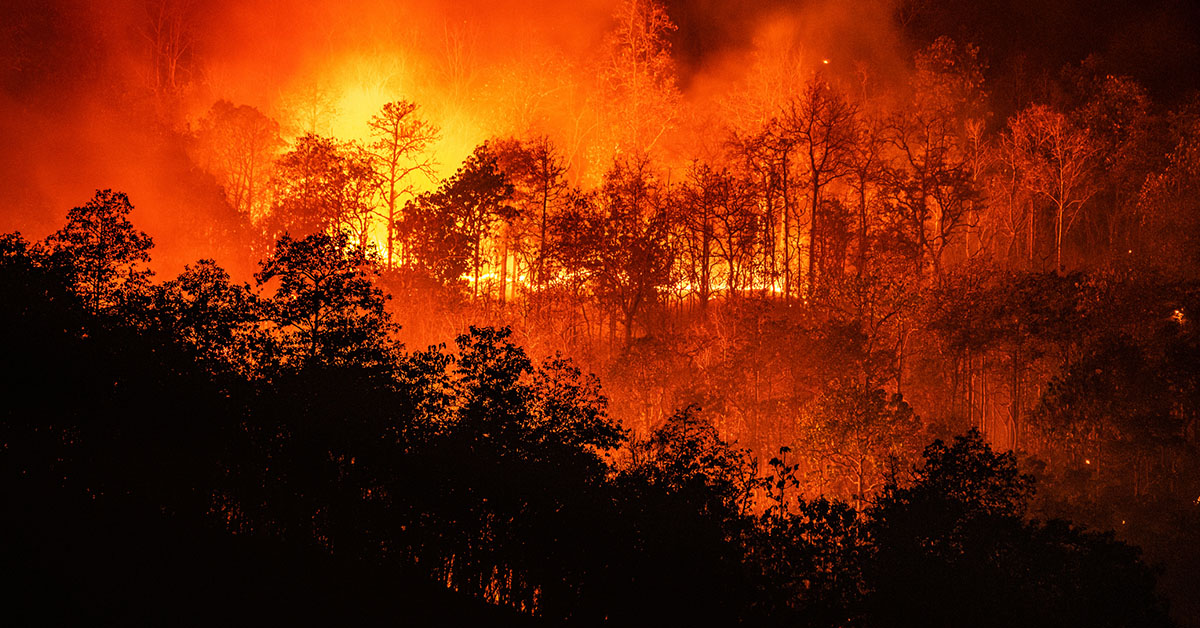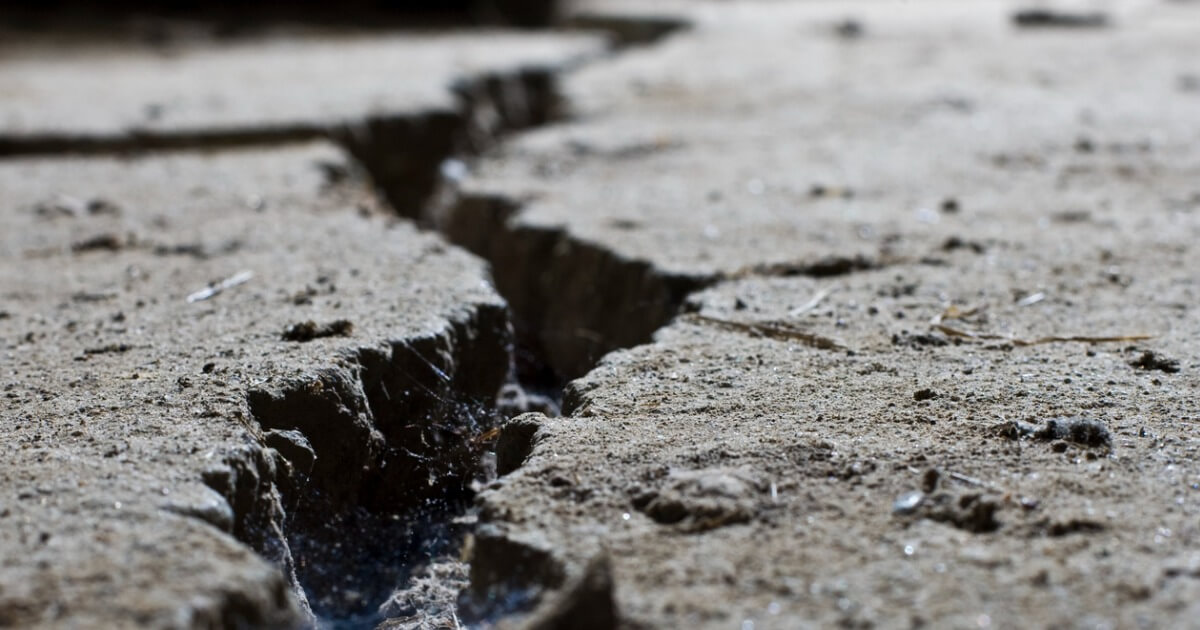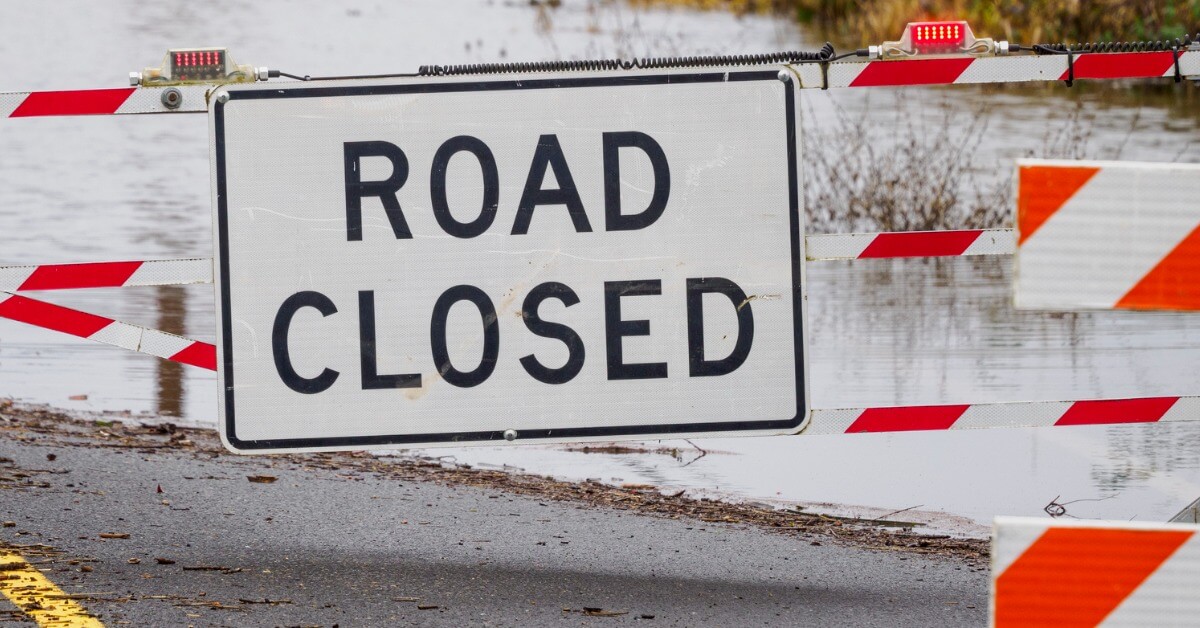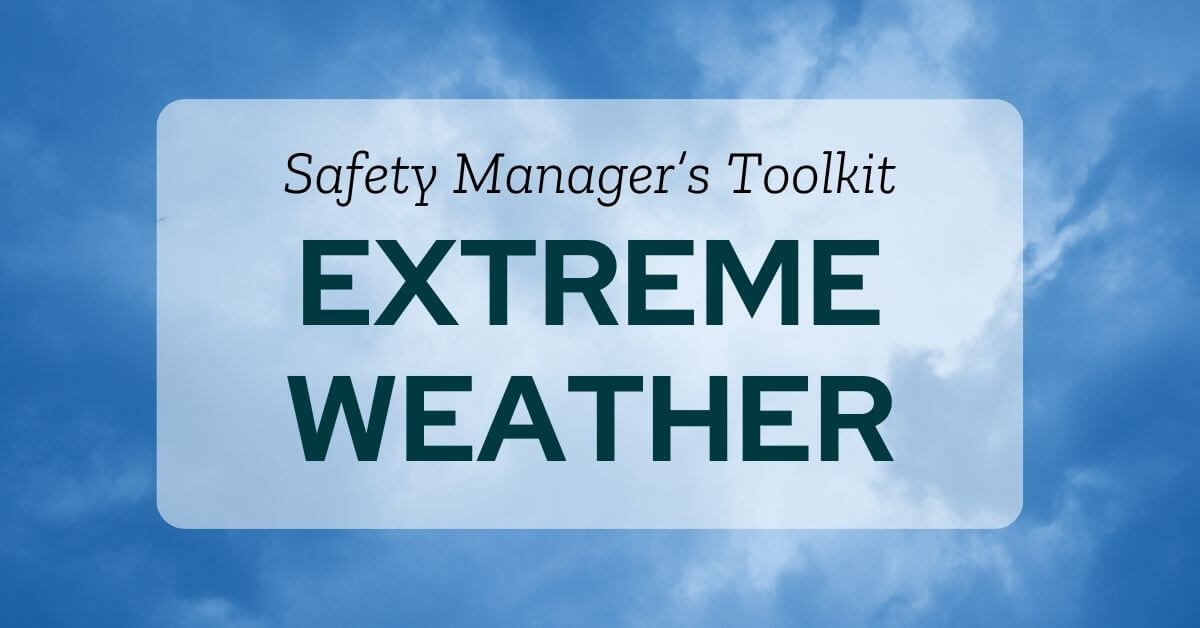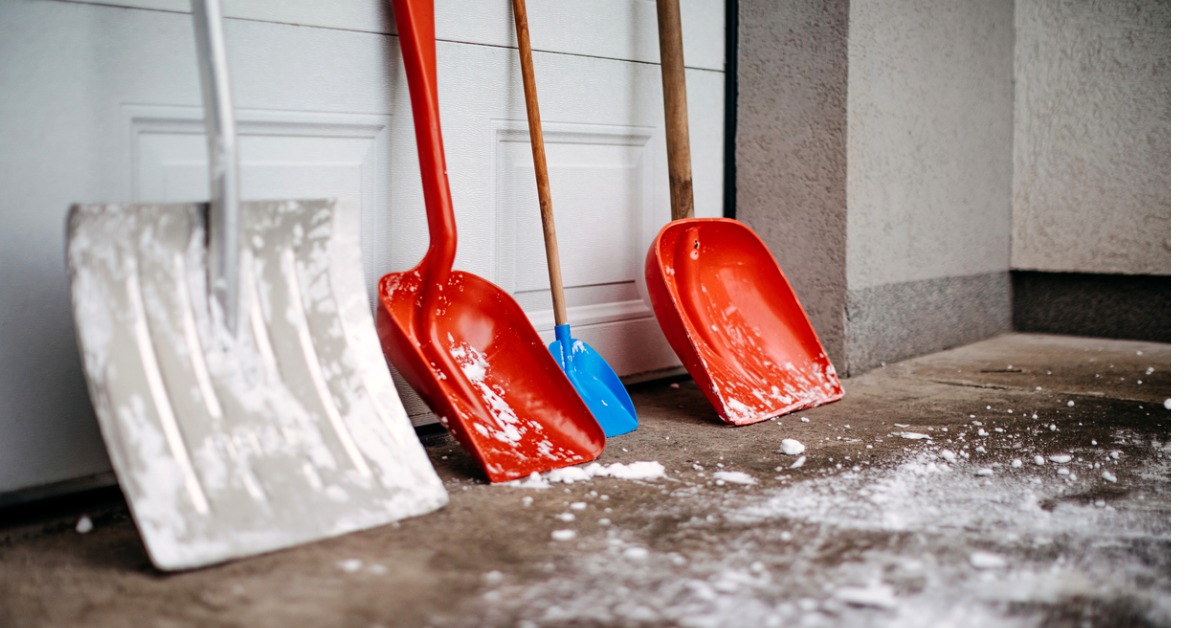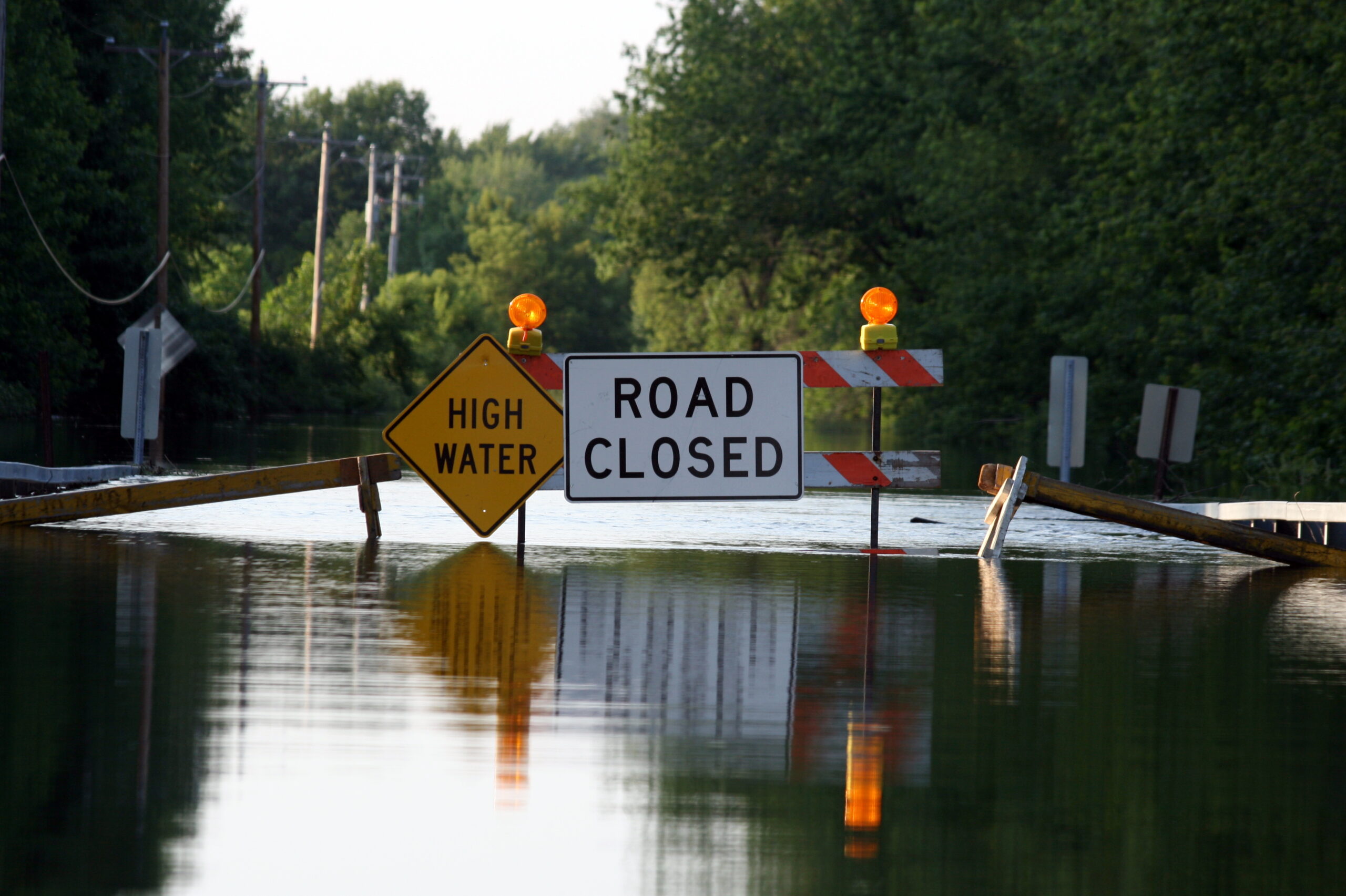Extreme weather and climate events are becoming increasingly common across the globe, causing widespread damage and disrupting daily life. Fire season’s here – which means it’s time to make sure we’ve got our wildfire safety plans in place.
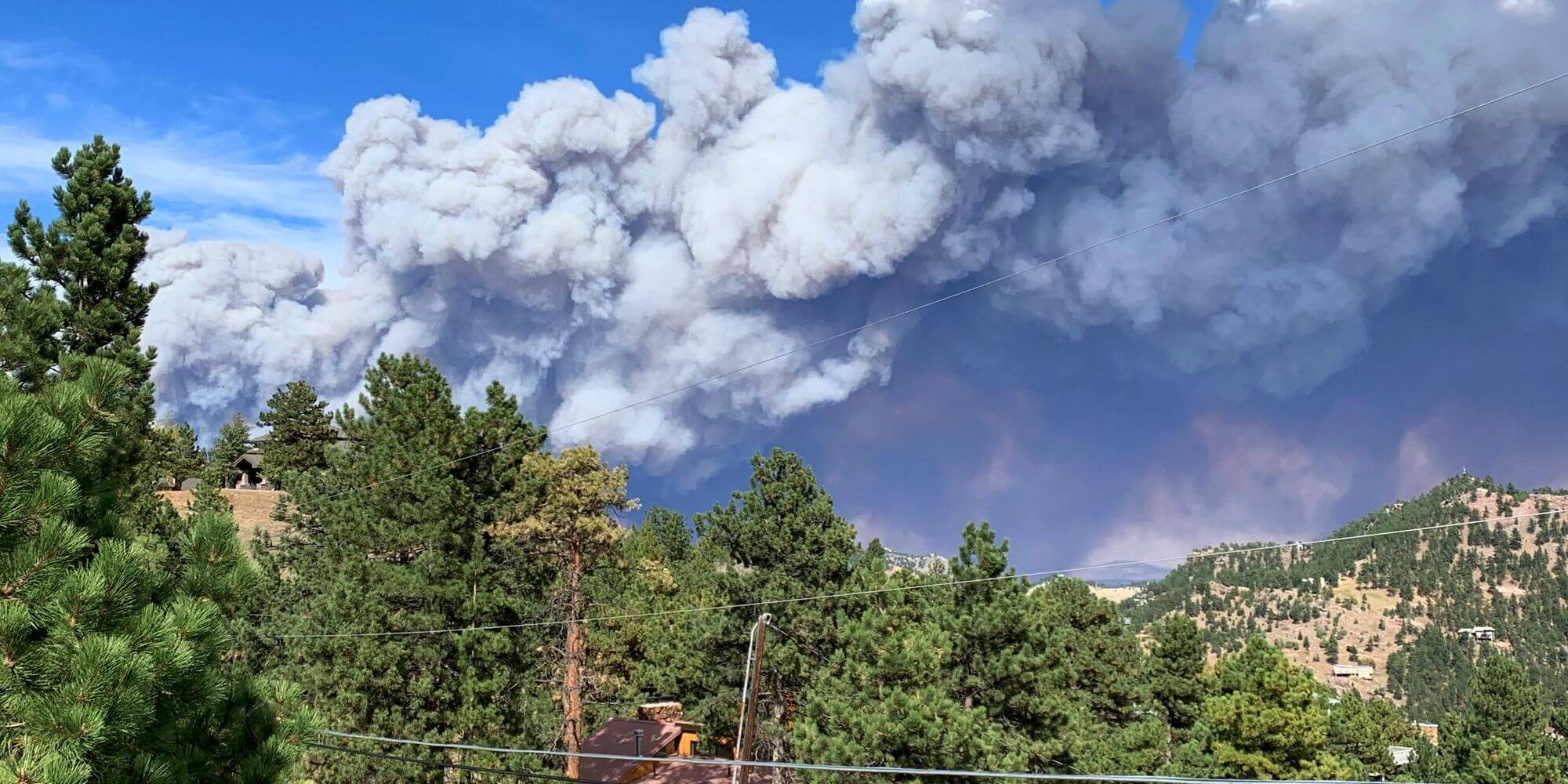
So how do you prepare for wildfire impacts on your facility? There are three keys to reducing the impact of wildfires on your workforce. Let’s follow the three Ps we use for all extreme weather preparation:
Let’s dive into these three Ps
The First P
PLAN for Wildfire Safety
Why should we plan for wildfires?
Wildfires and the smoke they produce are now unavoidable realities of modern life. In 2023 alone, there were over 55,000 wildfires in the United States, burning a span of over 2.6 million acres. Places like California, Nevada, and Oregon can be at high risk for wildfires, but if the conditions are hot and dry, a wildfire can ignite virtually anywhere. And it seems wildfires are only becoming bigger, more frequent, and longer-lasting, causing serious air pollution.
Familiarize Yourself with the Air Quality Index
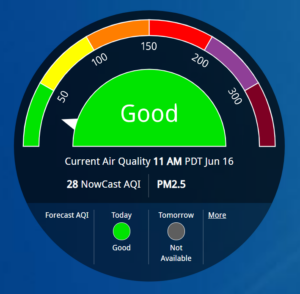
Wildfire smoke health standards are specialized for the air quality index (AQI) for PM2.5. And there are many government agencies that monitor air quality across the many high-risk regions for wildfire smoke.
One essential resource for learning how the air quality is generally in your specific area is AirNow, where you can enter your zip code for up-to-date and forecasted air quality information.
Here’s a deep dive on air quality for your reading pleasure >>
How do we plan for these events?
- Building owners and facility managers must take action to reduce exposure to wildfire smoke.
- Understand and become familiar with the local evacuation plans. Evacuate when prompted by emergency personnel.
- Stay up-to-date with your local fire restrictions.
The Second P
PREPARE for Wildfire Safety
OSHA Requires You to Reduce Employees’ Exposure to Polluted Air
Wherever you operate, you need to take certain steps to minimize employee exposure to polluted air. The Occupational Safety and Health Administration requires that you have a respiratory protection program in place, and many states go beyond federal regulations.
In California, for instance, the Division of Occupational Safety and Health (Cal/OSHA) requires employers to provide employees with N95 respirators when levels of smoke or other forms of air pollution reach a certain threshold.
Develop your wildfire smoke safety program
Just like your emergency response plan, your wildfire smoke safety plan helps you lay out your plan of attack well before fire season. Don’t wait until the air quality readings get bad to prepare plans for how to mitigate wildfire smoke exposure.
Once AQI readings reach the threshold, supervisors should be ready to:
- Provide wildfire smoke awareness training to all affected employees.
- Alert employees that the AQI has reached an unhealthy level and instruct them on specific protective measures to take.
- Encourage employees to check in when the air quality is getting worse or if they are suffering from any symptoms due to air quality.
Be aware that state-based regulations may place additional compliance requirements on employers.
- Gather supplies such as respirators, fire extinguishers, first aid, filters for air purification, water and food
- Check functionality of facility systems such as sprinklers, HVAC system, and fire alarms
- Create plan to keep smoke outside: Choose a room that can be closed off from outside air, and setup a portable air cleaner or filtration system
- If evacuation is unpreventable, plan to shutoff critical utilities and inspect facility for chemical hazards
The Third P
PRACTICE Responding to Wildfires
Who is in charge?
Developing a wildfire safety team is a great way to designate people within your organization as wildfire smoke safety leaders. Members of the team would be responsible for reporting, monitoring conditions, managing response protocols, implementing controls at each risk level, and ensuring the availability of supplies and equipment.
Educate your employees
Employees should be trained to understand fire watches and warnings. They should also thoroughly understand the protocols for arriving to work safely, the location of clean air rooms, and general employee duties during a wildfire.
Additionally, host formal training for employees authorized to shutoff facilities.
Wildfires can be challenging, but we can prevent them from being devastating with a solid emergency action plan.
You can keep your workforce safe and healthy during wildfire season by staying informed and taking proactive steps.
KPA’s Wildfire Smoke Safety Program is designed for employers—especially those in Western
states—where drought conditions often lead to harmful and widespread fires. Consistent with
Cal/OSHA’s Title 8 regulations, the program includes online training, a written program, and a
self-service inspection form delivered through KPA’s software.
With a little preparation, we can face any weather challenge with confidence.

Wildfire Smoke Safety Program
KPA's Wildfire Smoke Safety Program is designed for employers - especially those in states where drought conditions lead to wildfires - to keep employees safe during unhealthy wildfire smoke situations.
Read the Latest Extreme Weather Articles
Related Content
Explore more comprehensive articles, specialized guides, and insightful interviews selected, offering fresh insights, data-driven analysis, and expert perspectives.

